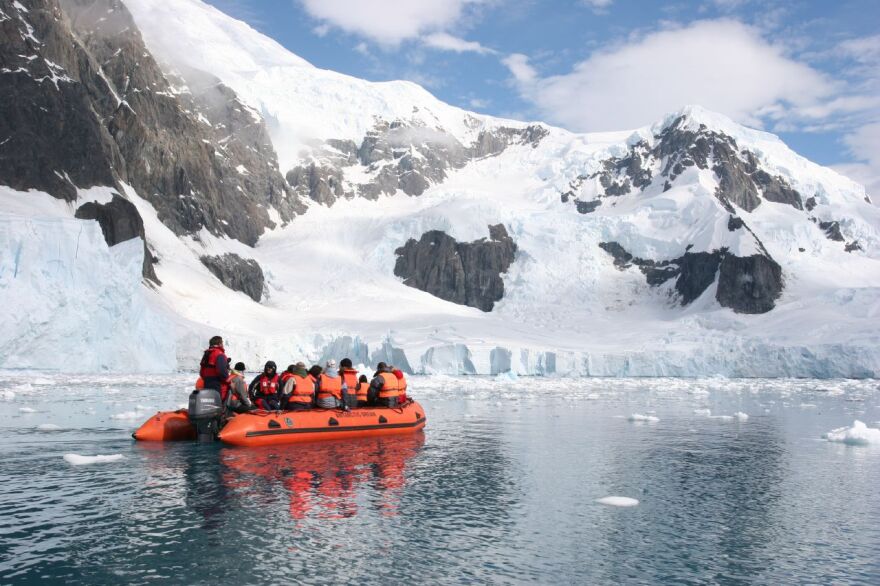Antarctica is the least populated continent on Earth. The only settlements are scientific research stations and field camps. These are staffed by rotating crews—no one lives there permanently. About five thousand five hundred people are present at them during the Antarctic summer and about a thousand stay through winter.
Antarctica is also visited by as many as seventy four thousand tourists per year. This number has doubled over the last decade. In 2022 an international team of researchers published evidence of the environmental impact of this growing human presence.
The Antarctic ice sheet is gradually melting due to human-caused global climate change, with Antarctica warming three times as fast as the global average. The researchers found that humans in Antarctica are among the many contributors to this problem. The burning of fossil fuels by Antarctic cruise ships, vehicles, airplanes, and diesel electric generators produces black carbon pollution. This soot darkens the snow, causing it to absorb more sunlight. This warms it and enhances its melting.
The researchers measured black carbon concentrations in snow samples from twenty-eight sites ranging over more than a thousand miles of the most visited portions of Antarctica, and compared them with measurements from more remote areas. They concluded that black carbon concentrations are two to four times higher in the more visited parts of the continent.
They estimate that the fuel consumption supporting each visitor to Antarctica results in 83 tons of melted ice, with research bases having a greater per person impact than tourists. To solve the problem, researchers recommend a shift to electric vehicles, and non-fossil fuel energy sources, such as wind energy, in Antarctica, along with reductions in tourism.
Reviewer: Ben Kravitz, Indiana University
Read more
- Warm winds are blowing in Antarctica
- Lightning strike rates are increasing in the Arctic
- Probing the limits of life in Antarctica
Sources
- The Guardian - Black carbon pollution from tourism and research increasing Antarctic snowmelt, study says
- Inverse - The dangerous way tourism is polluting Antarctica and accelerating melting
- NPR - Soot is accelerating snow melt in popular parts of Antarctica, a study finds
- The Print - Soot from research & tourist activity hastening snow melt in Antarctica, finds global study
- Eos - The uncertain future of Antarctica's melting ice
- Nature Communications - Black carbon footprint of human presence in Antarctica
Antarctica is the least populated continent on Earth. The only settlements are scientific research stations and field camps. These are staffed by rotating crews—no one lives there permanently. About five thousand five hundred people are present at them during the Antarctic summer and about a thousand stay through winter. Antarctica is also visited by as many as seventy four thousand tourists per year. This number has doubled over the last decade. In 2022 an international team of researchers published evidence of the environmental impact of this growing human presence.
The Antarctic ice sheet is gradually melting due to human-caused global climate change, with Antarctica warming three times as fast as the global average. The researchers found that humans in Antarctica are among the many contributors to this problem. The burning of fossil fuels by Antarctic cruise ships, vehicles, airplanes, and diesel electric generators produces black carbon pollution. This soot darkens the snow, causing it to absorb more sunlight. This warms it and enhances its melting.
The researchers measured black carbon concentrations in snow samples from twenty-eight sites ranging over more than a thousand miles of the most visited portions of Antarctica, and compared them with measurements from more remote areas. They concluded that black carbon concentrations are two to four times higher in the more visited parts of the continent.
They estimate that the fuel consumption supporting each visitor to Antarctica results in 83 tons of melted ice, with research bases having a greater per person impact than tourists. To solve the problem, researchers recommend a shift to electric vehicles, and non-fossil fuel energy sources, such as wind energy, in Antarctica, along with reductions in tourism.


